The Great Gatsby Symbolism
Symbolism means an artistic and poetic expression or style using figurative images and indirect ideas to express mystical concepts, emotions, and states of mind. It also refers to symbols writers use to convey specific meanings, and they vary depending on the circumstances. Symbolism in The Great Gatsby carries different meanings to different readers based on their perceptions. Some of the significant symbols used in The Great Gatsby are discussed below.

Symbolism in The Great Gatsby
Gatsby’s Mansion
Gatsby’s grand and lavish mansion symbolizes his high lifestyle. It also shows the inner conflict of Gatsby and foreshadows his loneliness hidden behind his lavish estate. It also symbolizes his unbound love for Daisy. Gatsby uses his new money to buy the grand house, thinking it is similar to the house of the old money taken away from him. Though he progresses a lot in life, ironically his luxurious lifestyle does not bring satisfaction to him. It rather seems a falsifying dream. In fact, he struggles to reach at this position to win Daisy back.
The Green Light
The green light pops up many times in the novel and represents Gatsby’s dream and hope. It also represents everything that haunts him and takes him to the past. It also signifies the green stuff (money), his memories with Daisy and the gap between his past and his present. He deliberately chooses the house in a direction from where he can have the enchanting sight of green light. He loves to stand at the dock to stare at that green light which represents his innermost desire to revive his past. He is hopeful that one day he will win the lost moments. The artificial green light also stands for his artificial and unrealistic aims in life.
The Eyes of T. J. Eckleberg
Another symbol we see in the novel is the eyes of T. J Eckleberg. These are faded bespectacled eyes printed on the billboard over the ‘valley of ashes’. The eyes represent the commercialism which is the backbone of the American dream. It is clear from the fact of how Gatsby earns a lot of wealth to get Daisy back in life. These eyes also represent the hollowness and solidity in Gatsby’s eyes, for despite having all the glitters in life, his eyes reflect emptiness. To George Wilson, they are the eyes of God that watch over every segment of the society. To Nick, they represent the waste of past which sticks around, though, vanished.
The Valley of Ashes
The valley of ashes is a symbolic place in the novel that first appears in chapter two. Nick goes there to search for his mistress. It is a place between East and West Egg created by dumping the industrial waste. It represents how morality and social code of conduct are dropped out of the industrial society. It also depicts the miserable plight of people like George Wilson who live among the ashes without ambition. This is a highly effective symbol that represents the divide between the poor and the rich class in the society of that time and even the present.
East and West Eggs
East and West Eggs are two fictional villages Fitzgerald has created to represent the different ideas of the new rich and the old rich. East Egg represents the old rich. Tom and Daisy belong to East Egg. It represents the people, who are born rich and are considered classy, with an arrogant stance toward West Egg. West Egg stands for newly rich people like Gatsby. It is the world of those who make their own fortune and are not rich by birth. East symbolizes corruption, whereas West symbolizes goodness.
The name Daisy is also symbolic. A daisy is a flower with white petals and a yellow center. Universally of white color represents purity, chastity, and innocence whereas yellow stands for corruption. Similarly, Daisy appears to be innocent and pure, but her heart is filled with lust, carelessness, and corruption. She lets Gatsby believe that she will leave Tom for him, but later it is found that money is the most important thing for her.
Green Color
Just like the Green Light, Green color runs throughout the novel. It universally represents vitality, wealth and growth. In the novel, green stands for Gatsby’s hope and short life. It symbolizes the bulk of wealth which Gatsby earns to win Daisy back in life. It is the symbol of death too, as Michalis describes the car that kills Myrtle as a green light, though, it is a yellow car. The green light thus represents the false status of dream and hope that win nothing for Gatsby.
Other Colors
Colors are widely used in the novel having deeper meanings. For example, Gatsby’s car and T. J. Eckleberg’s glasses are yellow. It represents the corrupt and false standards of Gatsby and the society of that time. Blue color stands for illusions and falsifying dreams ; Gatsby’s garden is blue, Eckleberg’s eyes are blue, and chauffer’s uniform is also blue. While white color is a symbol of purity, in the novel it symbolizes immorality. Gatsby, Daisy, and Jordan wear white, but none of them is a morally ideal character . The valley of ashes is grey symbolizing hopelessness, or filthy side of the society.
Cars in the novel symbolize the display of vanity. The rich and complex description of Gatsby’s car is an epitome of ostentation and excess. It describes the dominance of commercialism how wealth is the center of attraction for the society. The car of the drunk man is also symbolic, as he runs his car off the road and breaks the wheel. It represents the careless attitude and ignorance of the rich society.
Clock / Time
The clock in the novel symbolizes the passage of time that has passed and the moments Gatsby wants back. He wins the high living standards to rewind the clock to the times, change what happened between him and Daisy. In chapter five “the defunct masterpiece clock” represents that Gatsby is still living in the past with Daisy, while Daisy has moved on. The end of the novel also signifies the value of time and the dilemma faced by humans; the more we try to escape from the past, the more we get close to it.
Related posts:
- The Great Gatsby
- The Great Gatsby Quotes
- Owl Symbolism
- Bat Symbolism
- Fox Symbolism
- Hamlet Symbolism
- Symbolism in Advertising
- Examples of Symbolism in Art
- Butterfly Symbolism
- Dragonfly Symbolism
- Square Symbolism
- Flower Symbolism
- Colors Symbolism
- Crow Symbolism
- Hummingbird Symbolism
- Ladybug Symbolism
- Moth Symbolism
- Snake Symbolism
- Star Symbolism
- Elephant Symbolism
- Hawk Symbolism
- Freemason Symbolism
- Raven Symbolism
- Bees Symbolism
- Blue Jay Symbolism
- Cardinal Symbolism
- Deer Symbolism
- Dove Symbolism
- Pineapple Symbolism
- Moon Symbolism
- Rose Symbolism
- Spider Symbolism
- Mars Symbolism
- Water Symbolism
- Wolf Symbolism
- Hollywood Symbolism
- Eagle Symbolism
- Bird Symbolism
- Frog Symbolism
- Green Symbolism
- Lord of the Flies Symbolism
- The Scarlet Letter Symbolism
- Examples of Symbolism In Christianity
- Examples of Symbolism in Poetry
- Examples of Symbolism in the Bible
- Full Moon Symbolism
- Examples of Symbolism in Song Lyrics
- Letter to My Great, Great Grandchild
- Behind Every Great Man There Is A Great Woman
- To Be Great is to Be Misunderstood
- The Great Unwashed
- Great Expectations
- The Great Storm
- Great Expectations Quotes
- Great Expectations Characters
- 10 Great Metaphors in R&B Songs
- 10 Great Metaphors from Popular Music
- Top 6 Great Metaphors in Presidential Speeches
- After Great Pain, a Formal Feeling Comes
- Great Metaphor Examples for Kids
- Great Allegorical Poem Examples
- 10 Great Metaphors from Popular 2000’s Songs
- 10 Great Metaphors from Popular Disney Songs
- 10 Great Metaphors from Popular 1960s’ Songs
- 10 Great Metaphors from Popular 1970’s Songs
- 10 Great Metaphors from Popular 1980’s Songs
- 10 Great Metaphors from Popular 1990’s Songs
- Symbolism in Branding and Logos
- Lamb to the Slaughter
- Big Brother is Watching You
- If You Can’t Fly, Then Run
- The horror! The horror!
- Under the Spreading Chestnut Tree
- Francis Scott Key Fitzgerald
- 10 Religious Symbols Of Easter
Post navigation

Symbolism in the Great Gatsby
This essay will analyze the use of symbolism in F. Scott Fitzgerald’s “The Great Gatsby.” It will explore how symbols such as the green light, the eyes of Doctor T.J. Eckleburg, and the Valley of Ashes contribute to the novel’s themes of the American Dream, societal decay, and the illusion of love and wealth. The piece will discuss how Fitzgerald uses these symbols to critique the excesses of the Roaring Twenties. PapersOwl showcases more free essays that are examples of Happiness.
How it works
Symbolism – it’s a strange thing, seeing a deeper meaning in an inanimate object, or seeing a deeper meaning of something that happens in a story. It is an interesting, yet creative way to get a reader thinking, and engaged. Sometimes, symbolism can go unnoticed, but typically it really stands out, and leaves the reader thinking something like, “Wow, that eagle reappears every time he talks about freedom.” F. Scott Fitzgerald, the author of The Great Gatsby, uses symbolism to show how random objects throughout the story symbolize the reconstruction of Jay Gatsby and Daisy Buchanan’s relation.
- 1 Green Light Symbol in the Great Gatsby
- 2 What Does Gatsby’s House Symbolize?
- 3 What Do the Eyes of Dr. T.J. Eckleburg Symbolize
- 4 What Does the Car Accident Symbolize
Green Light Symbol in the Great Gatsby
There is a green light placed at the end of Daisy’s dock, and that green light is used to symbolize Gatsby’s hopes and dreams for the future, to have Daisy back. Near the end of chapter one, Nick Carraway, the narrator, sees Gatsby at the end of his dock, reaching towards the green light that is at the end of Daisy’s dock, across the bay separating the East Egg and West Egg. This important part was described by F. Scott Fitzgerald as, “he stretched out his arms toward the dark water in a curious way, and far as I was from him I could have sworn he was trembling. Involuntarily I glanced seaward—and distinguished nothing except a single green light, minute and far away, that might have been the end of a dock” (24). This quote from the book introduces the green light and suggests it as an important figure in the story, and presents Gatsby, as this is the first time he is in the story in real time, and not just spoken about by other characters. Gatsby is reaching towards the light, and obviously he is not attempting to grab ahold of the light. The green light symbolizes Daisy and Gatsby’s dream for the future, and he is reaching towards his dream to come true and earn Daisy back from Tom Buchanan, to himself. He dreams of having her back into his life, after no contact between the two. When Nick is watching Gatsby, Gatsby vanishes into the darkness. “When I looked once more for Gatsby he had vanished, and I was alone again in the unquiet darkness” (Fitzgerald 24-25). Gatsby vanishing into the darkness is foreshadowing that Gatsby will soon leave, which reflects on Daisy vanishing away from Gatsby five years prior after he had gone to war, to be with Tom. Once, Gatsby’s dream comes true and he is finally happy, his dream will fall and vanish, along with himself soon after.
What Does Gatsby’s House Symbolize?
Jay Gatsby owns an extremely expensive mansion, and it may just look like it is where he lives, but looking closer, the house may be an important symbol that ties into the time where the book takes place, and also ties into the green light symbol. “‘It was a strange coincidence,’ I said. ‘But it wasn’t a coincidence at all.’ ‘Why not?’ ‘Gatsby bought that house so that Daisy would be just across the bay’” (Fitzgerald 84-85). What has been revealed is that Gatsby had purchased his mansion not because he simply liked it, but because he wanted to be as close to Daisy as he can be, and that is right across the bay. This also suggests that all of the parties that Gatsby throws are happening in hopes of that one day Daisy will arrive to one of the parties, and Gatsby will get the chance to finally see her again. Another thing is, that Gatsby’s lives in his house alone, and being inside of a house that huge must be very lonely. Gatsby’s house being empty most of the time can also symbolize himself being empty and lonely, because he no longer has Daisy and the thought of never having her back makes him feel sad and empty. The fact that Gatsby’s house is empty most of the time can also symbolize the 1920’s boom, or The Roaring Twenties, because Gatsby deals with living in a mansion all by himself by throwing an open invite party every Saturday night, that hundreds of people attend to. “The lights grow brighter as the earth lurches away from the sun and now the orchestra is playing yellow cocktail music and the opera of voices pitches a key higher. Laughter is easier, minute by minute, spilled with prodigality, tipped out at a cheerful word” (Fitzgerald 44). This occurs at the start of chapter three, and it is the first party of Gatsby’s that Nick attends. The text evaluates on Gatsby being lonely, and that is the reason why he throws so many parties. He is not throwing parties to satisfy other people, because F. Scott Fitzgerald explains in the text that Gatsby doesn’t even know who most of the people are who come to his parties.
What Do the Eyes of Dr. T.J. Eckleburg Symbolize
In the Valley of Ashes, there is a billboard with a pair of eyes painted on it. The pair of eyes are named the “Eyes of Doctor T. J. Eckleburg.” Eyes of Doctor T. J. Eckleburg on the billboard symbolize that when there are people living poor, rich people look down on them, and the poor people are aware of it. Nick first sees the Eyes of Doctor T. J. Eckleburg in chapter two, while driving through the Valley of Ashes. “But above the grey land and the spasms of bleak dust which drift endlessly over it, you perceive, after a moment, the eyes of Doctor T. J. Eckleburg. The eyes of Doctor T. J. Eckleburg are blue and gigantic—their retinas are one yard high. They look out of no face but, instead, from a pair of enormous yellow spectacles which pass over a nonexistent nose” (Fitzgerald 26). The quote expresses the billboard as powerful, and just how aggressive the eyes on the billboard must seem to the people who live in The Valley of Ashes. Fitzgerald also uses imagery to describe how the billboard, or the eyes, overlook The Valley of Ashes.
After the death of his wife, George Wilson enters a state of shock and grief. Before it happened, he knew that something was up with Myrtle, and George refers to the billboard as “God.” “Wilson’s glazed eyes turned out to the ashheaps, where small grey clouds took on fantastic shape and scurried here and there in the faint dawn wind. ‘I spoke to her,’ he muttered, after a long silence. ‘I told her she might fool me but she couldn’t fool God. I took her to the window—’ With an effort he got up and walked to the rear window and leaned with his face pressed against it, ‘—and I said ‘God knows what you’ve been doing, everything you’ve been doing. You may fool me but you can’t fool God!’ ‘ Standing behind him Michaelis saw with a shock that he was looking at the eyes of Doctor T. J. Eckleburg which had just emerged pale and enormous from the dissolving night. ‘God sees everything,’ repeated Wilson” (Fitzgerald 170). This happens near the start of chapter eight, and George is saying how the Eyes of Doctor T. J. Eckleburg to him, symbolize God, and how he believes God sees everything, meaning God knew what Myrtle was doing with other men, if George himself did not know.
What Does the Car Accident Symbolize
One of the scariest things that can happen to somebody, is a car crash. But at the same time, one single car crash can symbolize an entire marriage crashing apart. From Jordan Baker, Nick learns about the first known situation where Tom is caught with another woman, while being married to Daisy. After their honeymoon, Tom was involved in a car accident and there was a maid from a hotel in the car with him. The news spread in newspapers, and Daisy knew about it. Daisy still kept the marriage, though. “A week after I left Santa Barbara Tom ran into a wagon on the Ventura road one night and ripped a front wheel off his car. The girl who was with him got into the papers too because her arm was broken—she was one of the chambermaids in the Santa Barbara Hotel” (Fitzgerald 83). These are the words of Jordan Baker, in chapter four of the book. Jordan narrates this to Nick, and it can suggest that Daisy is into Tom because of his wealth. For some reason even after caught cheating, Daisy decides to still be with Tom. The symbolism here is that the second the car suffered the damage, the marriage between Tom and Daisy suffered damage as well, as Daisy now knows that Tom is seeing other women. This is not the only car accident that symbolizes the fallout of a relationship. After Gatsby and Daisy meet again and fall in love, she goes to one of his parties.
After the party, Daisy is driving Gatsby’s Rolls Royce, with him next to her. While driving through The Valley of Ashes, Daisy strikes Myrtle Wilson, and kills her. Ironically, Myrtle is Tom’s mistress. Towards the end of chapter seven, F. Scott Fitzgerald describes Nick hearing about the accident in the newspaper as, “The ‘death car’ as the newspapers called it, didn’t stop; it came out of the gathering darkness, wavered tragically for a moment and then disappeared around the next bend. Michaelis wasn’t even sure of its color—he told the first policeman that it was light green” (147). Myrtle had jumped into the street, and Daisy hit her with Gatsby’s car. The car obviously had suffered damage, and that damage is also in Gatsby and Daisy’s relationship. After this happens, Gatsby starts to get a little annoyed that Daisy will not admit to Tom that she never loved him, and also supports the fact that Daisy loves Tom for his old money. F. Scott Fitzgerald has used a genius way of using cars in the story to represent the fall of Daisy and Tom’s relationship, as well as Daisy and Gatsby’s new relationship.
The Great Gatsby, written by F. Scott Fitzgerald, contains many forms of symbolism to represent the events that happen in the book, and most importantly, to represent Jay Gatsby and Daisy Buchanan’s relationship. The green light that Gatsby is reaching towards in the first chapter of the book is symbolizing him reaching towards his hopes and dreams, for Daisy. Jay Gatsby’s house, a gigantic mansion, always empty, is used for a symbol Gatsby being empty and lonely because he cannot find his happiness of having Daisy back, and it also can represent the Roaring Twenties, by having his parties. A billboard overlooking The Valley of Ashes can be symbolized as the rich overlooking and being better than the poor, and to some people, the Eyes of Doctor T. J. Eckleburg can be a symbol of God. Fitzgerald has used two car crashes in the book to symbolize two different relationships starting to become damaged, and how the person driving the car is causing the damage to the car and to the relationship. While reading The Great Gatsby, the many forms of symbolism are noticed, but if you dig even deeper, are there objects and things used to symbolize other themes of the story, too?
Cite this page
Symbolism in the Great Gatsby. (2020, Jul 24). Retrieved from https://papersowl.com/examples/the-great-gatsby-symbolism-essay/
"Symbolism in the Great Gatsby." PapersOwl.com , 24 Jul 2020, https://papersowl.com/examples/the-great-gatsby-symbolism-essay/
PapersOwl.com. (2020). Symbolism in the Great Gatsby . [Online]. Available at: https://papersowl.com/examples/the-great-gatsby-symbolism-essay/ [Accessed: 28 May. 2024]
"Symbolism in the Great Gatsby." PapersOwl.com, Jul 24, 2020. Accessed May 28, 2024. https://papersowl.com/examples/the-great-gatsby-symbolism-essay/
"Symbolism in the Great Gatsby," PapersOwl.com , 24-Jul-2020. [Online]. Available: https://papersowl.com/examples/the-great-gatsby-symbolism-essay/. [Accessed: 28-May-2024]
PapersOwl.com. (2020). Symbolism in the Great Gatsby . [Online]. Available at: https://papersowl.com/examples/the-great-gatsby-symbolism-essay/ [Accessed: 28-May-2024]
Don't let plagiarism ruin your grade
Hire a writer to get a unique paper crafted to your needs.

Our writers will help you fix any mistakes and get an A+!
Please check your inbox.
You can order an original essay written according to your instructions.
Trusted by over 1 million students worldwide
1. Tell Us Your Requirements
2. Pick your perfect writer
3. Get Your Paper and Pay
Hi! I'm Amy, your personal assistant!
Don't know where to start? Give me your paper requirements and I connect you to an academic expert.
short deadlines
100% Plagiarism-Free
Certified writers

Themes, Motifs, and Symbols in The Great Gatsby
- The Albert Team
- Last Updated On: March 1, 2022
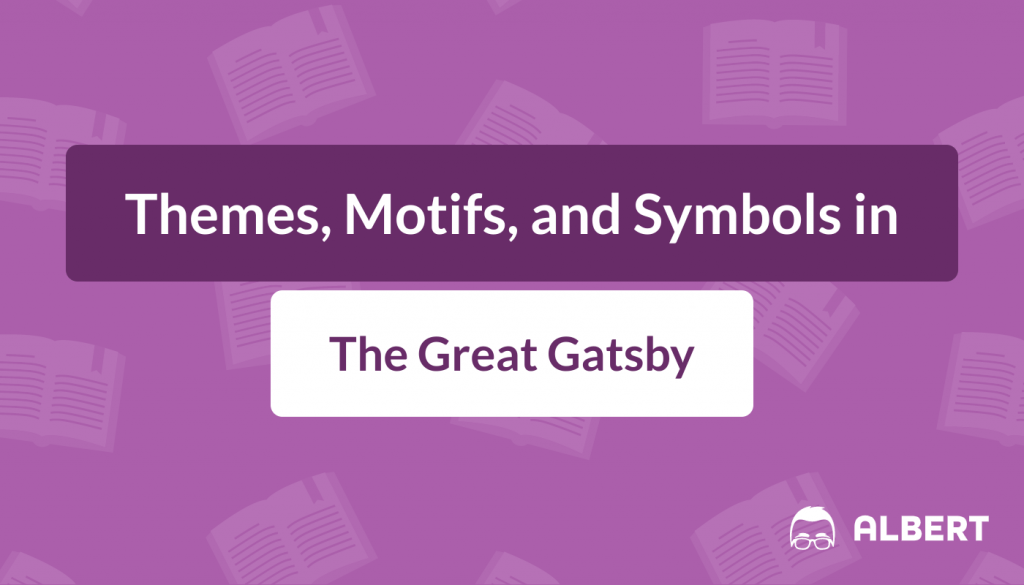
One of the most commonly taught novels, The Great Gatsby is rich with opportunities for thematic analysis and broader real-world discussion. Gatsby is a fantastic opportunity to challenge students to see past the money, fancy clothes, and fancy cars and into what brings them lasting joy and purpose. In this post, we’ll break down the biggest themes , motifs, and symbols in The Great Gatsby .
What We Review
Major Themes in The Great Gatsby
The Great Gatsby lends itself to many themes , but the primary purpose of the novel is to provide a sharp criticism of the American Dream as defined during the 1920s. Other themes — such as obsession with the past or dysfunctional relationships — all tie in with this singular idea of the vanity of pursuing wealth as the only means to true happiness and success.
Pursuit of the American Dream

One very evident theme in Fitzgerald’s novel is the Pursuit of the American Dream during the 1920s. Then, as now, many Americans believed that “anyone, regardless of where they were born or what class they were born into, [could] attain their own version of success in a society where upward mobility is possible for everyone” (Barone). Born penniless, James Gatz, or Jay Gatsby, was determined to achieve his own American Dream the only way he knew how: by attaining massive wealth by whatever means necessary. However, even after seemingly fulfilling his dream by becoming filthy rich, those who inherited their wealth still treat Gatsby as an outsider —namely, the Buchanans. Fitzgerald uses Gatsby’s devastating realization to criticize people’s perception of the American Dream as simply the “culmination of wealth” (Pumphrey).
To paint a picture for the reader, Nick personifies Gatsby’s pursuit of the American Dream in the green light at the end of the Buchanans’ dock, calling it the “orgastic future that year by year recedes before us” (Fitzgerald 180). Much like Gatsby, Americans still today work their entire lives to achieve their idea of the American dream, only for some to meet an untimely end before reaching this dream. One of the most poignant quotes of the entire novel is at the end where Nick states in reference to this unattainable dream that “We beat on, boats against the current, borne back ceaselessly into the past,” showing the vanity and utter pointlessness, in his eyes, of this “American Dream” (Fitzgerald 180).
Failure to Live in the Present; Obsession with the Past and Future
Gatsby is the clearest example of a character stuck in the past due to his obsession with Daisy. Nick observes him “stretch[ing] out his arms toward the dark water” (Fitzgerald 21). The reader soon learns that Gatsby is continuously reaching for a green light at the end of the Buchanans’ dock, signifying his continual pursuit of Daisy, who is always just out of his reach. Gatsby is so overcome with visions of his past that he is shackled by his own imagination and kept from forming a genuine connection with the real Daisy.
The past also consumes Tom Buchanan, his one claim to fame being his football career in New Haven. Nick recognizes this immediately, feeling that Tom would “drift on forever seeking, a little wistfully, for the dramatic turbulence of some irrecoverable football game” (Fitzgerald 6). Tom’s mistress, Myrtle, is always rhapsodizing what she and Tom will do once they are married to one another, something Tom clearly does not see in his future. Even in casual conversation, the Buchanans, particularly Daisy, reminisce about the past or plan for the future, always planning trips to the city or recollecting old acquaintances. Whenever Daisy is forced into the present, she is visibly uncomfortable and anxious.
The Destructive Nature of Dysfunctional Relationships

Fitzgerald’s novel is littered with questionable characters and suspicious situations. Characters constantly act and speak behind each other’s back, making it difficult to trust or predict anyone’s motives in the novel. Tom and Daisy’s relationship is the most obvious example of secrecy leading to conflict regarding Tom’s “woman in New York” and Daisy’s long-lasting infatuation with Gatsby. Tom isn’t even truthful with Myrtle, his mistress, and tells her he cannot marry her because Daisy is Catholic and will not file for divorce.
Miss Baker’s friendship with Daisy is just as secretive and manipulative. When she speaks to Nick behind Daisy’s back, she makes Daisy out to be a fool. She manipulates situations between Daisy and Gatsby behind Nick’s back, even when she knows nothing good can come from their secret romance. Daisy does not even have a functioning relationship with her own daughter; when Nick asks about her, all Daisy has to say is, “I suppose she talks, and eats, and everything” (Fitzgerald 16). We do not witness her daughter’s growth into adulthood, but we can only imagine the damage this separation from her parents has caused her.
The parties that Gatsby hosts in his mansions are not filled with his closest friends; rather, complete strangers flood his halls to spill rumors about their host and leave without a word the next day.
Gatsby, the only person who seems remotely interested in forming functional relationships, still lies to Nick about his upbringing immediately after asking Nick his opinion of him, as if to save himself preemptively. Throughout the novel, Gatsby attempts to form a real relationship with Daisy, which proves impossible because she can never live up to the Daisy of his imagination.
Motifs and Symbols in The Great Gatsby
Fitzgerald’s novel is rich with symbolism, whether it be through color, setting, or objects. Each detail, no matter how small, enforces the tone of the scene. Many colors and settings are used in stark contrast with one another; for example, the white and gold Buchanan mansion and Daisy are vastly different from the bleak and gray Valley of Ashes. Gatsby’s car is both gold and green, signifying both his achievement of wealth and his continual pursuit of rich things, including Daisy Buchanan.
Color
There are four distinct colors repeated throughout the novel that each carry meaning beyond the surface. These colors are white, gray, green, and gold.
Daisy and Jordan are both dressed in white at the start of the novel, and the open windows cause the white curtains to float in the air. Both the curtains and the women in white represent both innocence and superficiality of these characters who float through life lacking depth of personality. Nick Carraway describes Daisy as being “high in a white palace”, calling her both “king’s daughter” and “the golden girl” (Fitzgerald 120). In this instance, Nick characterizes her as this lofty, worshiped being, which mirrors Gatsby’s perspective and reinforces the fact that Gatsby will never be good enough for her.

By name, The Valley of Ashes is represented by the color gray, which symbolizes the harsh conditions of the working class and overall lack of joy or hope in this place. George Wilson’s garage naturally resides in this desolate place, described as “unprosperous and bare” (Fitzgerald 25). Words such as “foul”, “solemn”, and “wasteland” are used to describe the place constantly under the watch of T.J. Eckleburg’s gold-rimmed eyes (Fitzgerald 24).
Green symbolizes two primary things: money and lust. The leather seats in Gatsby’s car are a lush green color, implying that perhaps the bright yellow paint did not declare his wealth loudly enough. Tom forces himself into the driver’s seat of Gatsby’s car, emphasizing that he believes Gatsby to be undeserving of such luxury. The most prominent green object (other than money) is the green lantern at the end of the Buchanans’ dock. While this green light represents Gatsby’s dream to be with Daisy, it also more characteristically represents envy as Gatsby desires to have another man’s wife.

Gatsby’s Rolls Royce, later known as “The Death Car,” symbolizes money and the pompous lifestyle of the rich. Nick describes Daisy as a “golden girl”, Gatsby dons a gold tie for one of his many parties, and even the eyes of Dr. T. J. Eckleberg are rimmed in gold frames. In every instance, gold is both synonymous with wealth and “otherness”. Whether it is Daisy, Gatsby’s car, or even Dr. T.J. Eckleberg, each golden person or object is completely detached from the rest of society and feeling any sort of social responsibility. For example, Dr. T.J. Eckelberg’s looming presence over the Valley of Ashes
Valley of Ashes
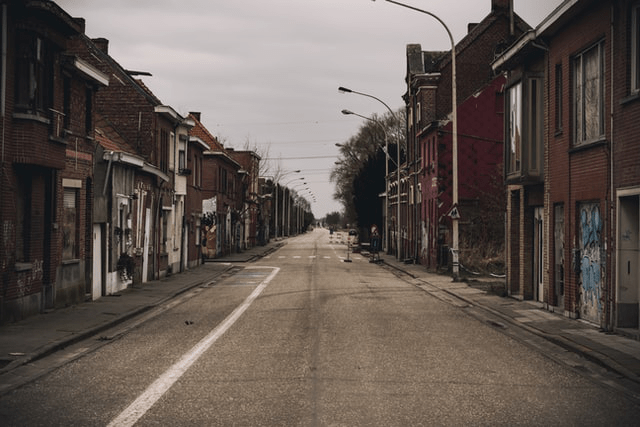
George Wilson’s garage naturally resides in the Valley of Ashes, described as “unprosperous and bare” (Fitzgerald 25). Words such as “foul”, “solemn”, and “wasteland” are used to describe the place constantly under the watch of T.J. Eckleburg’s gold-rimmed eyes (Fitzgerald 24). Myrtle Wilson’s brightly-dressed, sensual persona stands out in stark contrast to her colorless background. Even though her character doesn’t “fit” the setting she lives in, she is permanently bound to live and eventually die in this hopeless place. George even attempts to leave, but the thoughtless actions of the rich quickly tear apart his dream of a better life.
West Egg and Gatsby’s Mansion
While similar in appearance, East Egg and West Egg are drastically different from one another in status. West Egg, where Gatsby’s mansion resides, is “less fashionable” than East Egg and represents “new money” (Fitzgerald 5). Nick describes Gatsby’s mansion ironically as an “imitation”, further supporting the idea that Gatsby is an imposter in the realm of the rich and famous. West Egg residents are more inclined to hold extravagant and wild parties than their East Egg neighbors, even though East Eggers have no problem attending these parties held by their “less fashionable” neighbors.
East Egg and the Buchanan’s Mansion
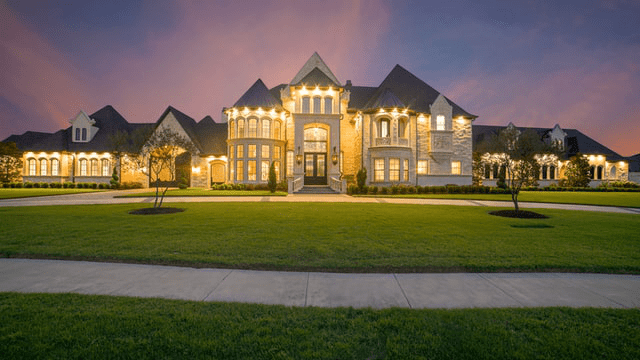
The mansions across the bay in East Egg are described as “white palaces”, further supporting that the color white implies something untouchable (Fitzgerald 4). The French windows reflected gold; vast gardens framed the property; “frosted wedding cake ceilings” hovered above every room, and “wine-colored” rugs sprawled across the floors (Fitzgerald 8). The author spares no detail to ensure the reader understands the exquisite luxury of the Buchanans’ home. East Egg residents also live at a slower and calmer pace than their neighbors, likely because they don’t feel the need to indulge in the luxuries offered at parties that are already at their fingertips.
Objects
Doctor T. J. Eckleberg’s eyes
Dr. T.J. Eckelberg’s eyes are painted onto a fading billboard that overlooks the Valley of Ashes. The eyes float independently of a face or even a nose and are framed in a pair of gold eyeglasses. Not much is known about Dr. Eckelberg; the narrator assumes that he either “sank down himself into eternal blindness” or simply forgot about his billboard and moved to a different city (Fitzgerald 24). Either way, the enormous eyes have a looming presence over the Valley of Ashes; constantly “brood[ing]” over this desolate place. You can define Fitzgerald’s choice of the word “brood” in two very different ways. These eyes could be “brooding” and watching over the city like a worried mother hen wishing to care for her chicks. Or, these eyes could be “brooding” because they are thinking deeply about everything they see that makes them continually unhappy.
Green Light

The green light at the end of the Buchanans’ dock represents Daisy in Gatsby’s eyes. Every time he sees it, he thinks of her and desires to have her. He finds hope in this light; as long as he can see it, Daisy is still just within his grasp. However, Nick sees this green light through much more critical eyes by the end of the novel. He refers to it instead as the “orgastic future that year by year recedes before us” (Fitzgerald 180).
Two important words are used to critique Gatsby’s dream, or more broadly, the American Dream. The first word, orgastic, has sexual connotations and pairs with this lustful desire Gatsby has for Daisy; she is his dream: she fascinates, entices, and overwhelms every part of his being. Likewise, the American Dream can become so consuming of an obsession that it takes on this euphoric or intoxicating appeal. The other crucial word is “recede”: as we pursue our version of the American Dream year after year, it doesn’t get any closer; it only “recedes” or moves farther and farther out of reach. Gatsby’s dream, personified in the green light, is the primary symbol of the novel and ties into Fitzgerald’s overwhelming critique of the American Dream throughout the novel.
Gatsby’s Car
Gatsby’s car has many roles throughout the novel, so much so, it could even be considered a secondary character. First, his car is used as a shuttle to bring people to his lavish parties; then, the car is used to impress Nick and convince him to do Gatsby a favor. Later in the novel, however, things take a dark turn. Tom forces himself into Gatsby’s car for their trip to the city. It is unclear why he does this other than to simply assert his own power over Gatsby. Finally, the car, driven by Daisy, murders Myrtle Wilson and is renamed the “Death Car”. A vivid picture of luxurious living with green leather interior and a bright yellowish gold paint job, Gatsby’s car is yet another failed attempt at reaching his American Dream through the accumulation of flashy and expensive things.
Wrapping Up
Although a relatively brief read, Fitzgerald’s novel is jam-packed with rich opportunities for thematic analysis and tracking motifs and symbols. Drawing on the text For quick assignment ideas, check out our 200+ Great Gatsby review questions , and check out our pre-made chapter quizzes , designed to track your students’ reading progress and comprehension before moving on to a new section of the text.
Works Cited
Fitzgerald, F. Scott. The Great Gatsby . Scribner, 2018.
Interested in a school license?
Popular posts.

AP® Score Calculators
Simulate how different MCQ and FRQ scores translate into AP® scores

AP® Review Guides
The ultimate review guides for AP® subjects to help you plan and structure your prep.

Core Subject Review Guides
Review the most important topics in Physics and Algebra 1 .

SAT® Score Calculator
See how scores on each section impacts your overall SAT® score

ACT® Score Calculator
See how scores on each section impacts your overall ACT® score

Grammar Review Hub
Comprehensive review of grammar skills

AP® Posters
Download updated posters summarizing the main topics and structure for each AP® exam.

Choose Your Test
Sat / act prep online guides and tips, best analysis: green light in the great gatsby.
Book Guides

One of the most arresting images in The Great Gatsby is Nick's vision of Gatsby stretching his arms out towards a small green light on the opposite shore of the bay. The mysterious, almost mystical nature of this gesture is a sure-fire sign that this green light is a symbol.
What is a symbol? It's something that is given extra meaning beyond itself. Something that stops being simply an everyday object, and instead represents thoughts and ideas that are bigger than itself.
What are the abstract ideas behind the green light in The Great Gatsby ? Read on to see where this symbol pops up in the novel, what themes it is connected to, which characters are most closely associated with it, and some ideas for essay topics on this symbol.
Quick Note on Our Citations
Our citation format in this guide is (chapter.paragraph). We're using this system since there are many editions of Gatsby, so using page numbers would only work for students with our copy of the book.
To find a quotation we cite via chapter and paragraph in your book, you can either eyeball it (Paragraph 1-50: beginning of chapter; 50-100: middle of chapter; 100-on: end of chapter), or use the search function if you're using an online or eReader version of the text.
What Is the Green Light in The Great Gatsby ?
Before we delve into the symbolic meaning of the green light, let's first establish what this object is in concrete terms.
The green light is a permanently lit electric lamp that marks the end of Daisy and Tom's boat dock. It's a way to warn boats at night or during inclement weather that there is a structure there—this is why it is always on.
Because the Buchanans' mansion is directly across the bay from Gatsby's mansion, Gatsby can always see the green light.
Key Quotes About the Green Light
In order to figure out what the green light means as a symbol, let's do some close reading of the moments where it occurs in The Great Gatsby.
The Green Light in Chapter 1
The image of the green light at the end of Daisy's dock occurs for the first time at the end of the novel's first chapter . Before we have even met Gatsby, we get a description of him stretching out his arms towards something he can't reach —a gesture he will repeat over and over again.
...a figure had emerged from the shadow of my neighbor's mansion and was standing with his hands in his pockets regarding the silver pepper of the stars. Something in his leisurely movements and the secure position of his feet upon the lawn suggested that it was Mr. Gatsby himself, come out to determine what share was his of our local heavens.
...he stretched out his arms toward the dark water in a curious way, and far as I was from him I could have sworn he was trembling. Involuntarily I glanced seaward--and distinguished nothing except a single green light, minute and far away, that might have been the end of a dock. When I looked once more for Gatsby he had vanished, and I was alone again in the unquiet darkness. (1.151-152)
One thing in particular is interesting about the introduction of the green light: it's very mysterious . Nick seems not to be quite sure where the light is, or what its function might be:
- Although physically bounded by the width of the bay, the light is described as impossibly small ("minute" means "tiny enough to be almost insignificant") and confusingly distant.
- Even though we find out later that the light never turns off, here Nick only seems to be able to see the light when Gatsby is reaching out towards it. As soon as Gatsby disappears, Nick is in "darkness."
- This vagueness and mystery is a good way for the novel to underscore the fact that this light is a symbol —it stands not just for the physical object that it describes, but for an idea within the book. What's the idea? I'll talk all about it in the next section of this article.
The Green Light in Chapter 5
We return to the image of the light exactly halfway through the novel, in the fifth chapter , when Gatsby is showing Daisy around his mansion after he "accidentally" runs into her at Nick's house.
"If it wasn't for the mist we could see your home across the bay," said Gatsby. "You always have a green light that burns all night at the end of your dock."
Daisy put her arm through his abruptly but he seemed absorbed in what he had just said. Possibly it had occurred to him that the colossal significance of that light had now vanished forever. Compared to the great distance that had separated him from Daisy it had seemed very near to her, almost touching her. It had seemed as close as a star to the moon. Now it was again a green light on a dock. His count of enchanted objects had diminished by one. (5.117-118)
This appearance of the green light is just as vitally important as the first one, mostly because the way the light is presented now is totally different than when we first saw it. Instead of the "enchanted" magical object we first saw, now the light has had its "colossal significance," or its symbolic meaning, removed from it. This is because Gatsby is now actually standing there and touching Daisy herself, so he no longer needs to stretch his arms out towards the light or worry that it's shrouded in mist.
However, this separation of the green light from its symbolic meaning is somehow sad and troubling . Gatsby seemingly ignores Daisy putting her arm through his because he is "absorbed" in the thought that the green light is now just a regular thing. Nick's observation that Gatsby's "enchanted objects" are down one sounds like a lament—how many enchanted objects are there in anyone's life?
The Green Light in Chapter 9
The last time we encounter the green light is in the final paragraphs of the novel.
And as I sat there brooding on the old, unknown world, I thought of Gatsby's wonder when he first picked out the green light at the end of Daisy's dock. He had come a long way to this blue lawn and his dream must have seemed so close that he could hardly fail to grasp it. He did not know that it was already behind him, somewhere back in that vast obscurity beyond the city, where the dark fields of the republic rolled on under the night.
Gatsby believed in the green light, the orgastic future that year by year recedes before us. It eluded us then, but that's no matter--tomorrow we will run faster, stretch out our arms farther. . . . And one fine morning----
So we beat on, boats against the current, borne back ceaselessly into the past. (9.152-154)
Now the light has totally ceased being an observable object. Nick is not in Long Island any more, Gatsby is dead, Daisy is gone for good, and the only way the green light exists is in Nick's memories and philosophical observations. This means that the light is now just a symbol and nothing else .
But it is not the same deeply personal symbol it was in the first chapter. Check out the way Nick transitions from describing the green light as something "Gatsby believed in" to using it as something that motivates "us." Gatsby is no longer the only one reaching for this symbol—we all, universally, "stretch out our arms" toward it , hoping to reach it tomorrow or the next day.
You can read a more in-depth analysis of the end of the novel in our article on the last paragraphs and last line of the novel .
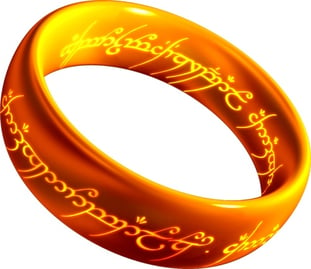
Finally, as Gatsby's dream is dashed, the green light stops being something that is his alone, and instead takes on a universal quality . Now it stands for the unreachable dream that lives inside all people. For Nick, life is a constant struggle between our past mistakes, experiences, and sense of reality, which pull us back and weigh us down, and the green light of unrealistic hope that drives us to think we will do better and achieve more the next day.
The green light ends up standing for this dream of an "orgastic future" —that's right, that means a future lived at the height of orgasm—which is constantly getting farther and farther away, and that we keep trying to grab for, despite the impossibility of reaching it.

Characters, Themes, Motifs, and Symbols Connected to the Green Light
Jay Gatsby . Gatsby is most closely associated with the green light. He is the one who obsessively stares at this light at the end of Daisy's dock, dreaming of reuniting with her. He is the one who reaches his hands towards it, showing us that it is a symbolic representation of his dreams that are always just out of reach. And he is the one whose belief in the green light and its promise of a future of perfect happiness so profoundly affects Nick that Nick ends up admiring Gatsby.
Daisy Buchanan . The green light is located at the end of Daisy's dock, and is Gatsby's only physical sign of her before he meets her at Nick's house. For a long time, the green light, Gatsby's ambitious hopes, and Daisy are all symbolically one and the same. Only when Daisy has an affair with Gatsby, showing that she is a flesh and blood person with her own desires, fears, and flaws, does she separate from this idealized symbol of hope.
Nick Carraway . Nick is the one who realizes the significance of the green light for Gatsby when he sees Gatsby stretching his arms out towards it. He is also the one who connects the green light with everyone's hopes and dreams at the very end of the book.
Society and Class. For Gatsby, just as Daisy is visible through the green light, but in reality out of reach, so is the old money contingent of wealthy Long Island society. No matter how high Gatsby rises and how rich he gets, he still can't break through that final barrier—and he can never quite grasp the green light.
The American Dream . The green light comes to represent not just Gatsby's dream, but the aspirational American Dream that the novel shows in both its positive and negative aspects. Like this national myth, the green light is forever just out of reach, but also forever motivating feats of improbable achievement.
Symbol : Colors. That the light is green is very significant in a novel that is methodically color-coded. Somewhat in opposition to its culturally positive associations, in The Great Gatsby, green tends to be a sign of either hopeful rebirth, or sickness, greed, and death.

Essay Ideas and Tips for Writing About the Green Light
Now that we've explored the layers of meanings behind the green light at the end of Daisy's dock, you're in a good place to think about how to write about this symbol.
How to Write an Essay About the Green Light
Here are some tips on how to write an essay about the role of a symbol in a novel:
- Build from the text out. In this article, I first looked at the green light in context and discussed its meaning in the exact places where it appears, and only afterward wrote about its general significance in the novel. The same basic rule of thumb is good to keep in mind for your own essay. Work from small ideas to big ones, and your argument will be well supported.
- Make an argument. It's not enough to just describe the symbol and explain its possible meanings. Instead, you have to make sure that you're making some kind of point about why/how the symbol works. How do you know if you're making an argument and not just saying the obvious? If you can imagine someone arguing the opposite of what you're saying, then you've got an argument on your hands.
- Don't overthink it. Sure, the green light can be said to represent lots of things: Gatsby's dreams, Daisy, or the quest to grab the elusive brass ring. But that doesn't mean that it also stands for world peace, environmental degradation, or Nick's pining for his war days. In other words, watch out for stretching your symbol analysis too far from what the text is telling you.
Essay Topic Ideas on the Green Light
Here are some possible essay arguments. You can build from them as-is, argue their opposite, or use them as jumping-off points for your own interpretation.
The green light is a kind of affiliation test for Gatsby. Those who imbue it with meaning like he does (like Nick) end up sympathizing with Gatsby; those who only see it as an object (like Daisy and Tom) are doomed to dismiss Gatsby also.
Gatsby's downfall starts at the moment when he stops seeing the green light as a symbol for his dreams and goals.
Ultimately, the green light means far more to Nick than to Gatsby.

Green Light in The Great Gatsby: The Bottom Line
- The green light is a permanently lit lamp that marks the end of Daisy and Tom's boat dock.
- The image of the green light occurs:
- At the end of Chapter 1, when Gatsby is reaching towards it and it is very mysterious.
- In Chapter 5, when Gatsby and Daisy have reconnected, taking the symbolic meaning away from the green light
- At the end of Chapter 9, when it transitions from being a symbol just for Gatsby and instead becomes a universal symbol of hope for the future.
- The significance and symbolic meaning of the green lights shifts:
- In the beginning of the novel, the light stands for Gatsby's dreams, hopes, and desires to reunite with Daisy.
- During the course of the novel, Gatsby's dream is revealed to be delusional and unrealizable, so the symbolic meaning behind the green light collapses.
- Finally, as Gatsby's dream is dashed, the green light stops being something that is his alone, and instead stands for the unreachable dream of an "orgastic future" that is constantly getting farther and farther away and that we keep trying to grab for.
- The green light is associated with:
- Jay Gatsby, who obsessively stares at this light at the end of Daisy's dock, dreaming of reuniting with her.
- Daisy Buchanan, since the green light, Gatsby's ambitious hopes, and Daisy are all symbolically one and the same.
- Nick Carraway, who is the one who realizes the significance of the green light for Gatsby and who connects the green light with everyone's hopes and dreams.
- Society and class, the upper echelon of which is just as out of reach for Gatsby as the green light.
- The American Dream, which is the aspirational hope that the novel shows in both its positive and negative lights.
- Colors, which are very significant in this methodically color-coded novel.
What's Next?
Review where the green light appears to get a better sense of its context: Chapter 1 , Chapter 5 , Chapter 9 , explore the way the end of The Great Gatsby connects to its beginning through the recurring image of the green light and compare and contrast Nick and Gatsby to see what the different ways they relate to the green light says about them.
Want to get some of that green light into your own life? Get yourself some Gatsby accessories from our list of the 15 must-have items for every fan of The Great Gatsby .
Check out all the other symbols that enrich this novel.
Decide whether Gatsby primarily treats Daisy as an object , or whether he does have a sense of her as a person and loves her for herself .
Read along as we walk through other works of literature with our analyses of " Do not go gently into that good night " (Dylan Thomas), The Cask of Amontillado (Edgar Allan Poe), and The Crucible (Arthur Miller).

Anna scored in the 99th percentile on her SATs in high school, and went on to major in English at Princeton and to get her doctorate in English Literature at Columbia. She is passionate about improving student access to higher education.
Ask a Question Below
Have any questions about this article or other topics? Ask below and we'll reply!
Improve With Our Famous Guides
- For All Students
The 5 Strategies You Must Be Using to Improve 160+ SAT Points
How to Get a Perfect 1600, by a Perfect Scorer

Series: How to Get 800 on Each SAT Section:
Score 800 on SAT Math
Score 800 on SAT Reading
Score 800 on SAT Writing
Series: How to Get to 600 on Each SAT Section:
Score 600 on SAT Math
Score 600 on SAT Reading
Score 600 on SAT Writing
Free Complete Official SAT Practice Tests
What SAT Target Score Should You Be Aiming For?
15 Strategies to Improve Your SAT Essay
The 5 Strategies You Must Be Using to Improve 4+ ACT Points
How to Get a Perfect 36 ACT, by a Perfect Scorer
Series: How to Get 36 on Each ACT Section:
36 on ACT English
36 on ACT Math
36 on ACT Reading
36 on ACT Science
Series: How to Get to 24 on Each ACT Section:
24 on ACT English
24 on ACT Math
24 on ACT Reading
24 on ACT Science
What ACT target score should you be aiming for?
ACT Vocabulary You Must Know
ACT Writing: 15 Tips to Raise Your Essay Score
How to Get Into Harvard and the Ivy League
How to Get a Perfect 4.0 GPA
How to Write an Amazing College Essay
What Exactly Are Colleges Looking For?
Is the ACT easier than the SAT? A Comprehensive Guide
Should you retake your SAT or ACT?
When should you take the SAT or ACT?
Stay Informed
Get the latest articles and test prep tips!
Looking for Graduate School Test Prep?
Check out our top-rated graduate blogs here:
GRE Online Prep Blog
GMAT Online Prep Blog
TOEFL Online Prep Blog
Holly R. "I am absolutely overjoyed and cannot thank you enough for helping me!”
Symbolism in The Great Gatsby
This essay sample explores the symbolism in The Great Gatsby . Some of the symbolism examples are the eyes, color, and the valley of ashes. Find out what they represent with the help of our The Great Gatsby symbolism essay sample!
The Great Gatsby Symbolism: The Eyes
Symbolism in the great gatsby: the green light, symbolism in the great gatsby: the valley of ashes.
Most of the imposing novels have symbols that represent the themes in pushing forth the objective of the book. In The Great Gatsby there are several symbols but the most powerful appears to be the eyes that overlook the valley from a bill board.
Although this symbol is marginally influencing the course of events, it holds a deep meaning in the intention of the novel. There are other symbols which essentially have a bearing on the way people perceive the symbols in the book as affecting their value judgments. In the literary context, symbols represent the different concepts and ideas in regard to the colors, figures and characters (Matthew J. Bruccoli, 2002).
The Eyes are in fact a pair of spectacled and pale eyes that appear tinted on a bill board that watches over the valley of ashes. Although the novel has never made this conclusion directly, it is much evident that the eyes symbolize that they are observing the deeds of the American society in looking upon the valley as a moral wasteland.
It is known in this context that throughout the novel Fitzgerald has suggested that symbols are in the nature of only conveying a meaning since it is the characters that infuse them with the inherent meanings. A different meaning is only drawn by George Wilson, who in being struck with grief draws a connection between God and the eyes of Doctor T J Eckleburg.
There is a visible lack of tangible meaning to the character of the image which brings about an unsettled feeling to the observer. Hence it can be implied that the eyes also connote the lack of meaning in the world as also the randomness in the mental process of people in drawing meanings from objects.
Such ideas are explored by Nick in Chapter eight while he is engrossed in his imagination about Gatsby’s thought processes which lead to depression in thinking of the prevailing emptiness in dreams and symbols (Jonathan Yardley, 2007).
Ample significance of eyes is implied in this regard by F. Scott Fitzgerald when he says, “The eyes of Doctor T. J. Eckleburg… look out of no face, but instead, from a pair of enormous yellow spectacles which pass over a nonexistent nose. …But his eyes, dimmed a little by many paintless days under sun and rain, brood on over the solemn dumping ground.” (1999, p 27-28)
The green light is positioned at the ending of Daisy East Egg docks and is hardly noticeable from the West Egg lawn of Gatsby and symbolizes the dreams and hopes for Gatsby’s future. In his book Gatsby has associated the green light with Daisy who is depicted in chapter 1 as making efforts in reaching towards it in the dark in assuming that it will lead him in the direction of his goals.
Since the American dream that Gatsby has is largely associated with the pursuit for Daisy, the green light is in the nature of symbolizing this rather sweeping ideal. Nick also compares in chapter nine, the green light with America in imagining how it must have appeared to the earlier colonists of the new nation as it rose out of the oceans (Dan Morpurgo, 2008).
In regard to the green light F. Scott Fitzgerald has aptly narrated, “And as I sat there, brooding on the old unknown world, I thought of Gatsby’s wonder when he first picked out the green light at the end of Daisy’s dock. He had come a long way to this blue lawn and his dream must have seemed so close that he could hardly fail to grasp it. He did not know that it was already behind him….” (1999, p 189)
The Valley of ashes is initially presented in chapter two as being located between New York City and West Egg. It comprises of a lengthy expanse of deserted land which became so as a result of the large scale disposal of industrial ashes.
The Valley of Ashes is in the nature of representing the social and moral decaying in society which is a result of the unreserved quest for wealth on the part of the richer strata of society who indulge in such practices just for their own satisfaction and pleasures.
It also symbolizes the suffering of the poor just as George Wilson, who had no option but to exist with the unclean ashes and in the process to have lost his vigor and vitality. The valley of Ashes has a lot of significance as evident from the words of F. Scott Fitzgerald, “This is a valley of ashes – a fantastic farm where ashes grow like wheat…” (1999, p 26)
Dan Morpurgo, Book Review: The Great Gatsby, February, 2008, Associated Content.
Jonathan Yardley, ‘Gatsby’: The Greatest Of Them All, January 2, 2007, The Washington Post.
F. Scott Fitzgerald, The Great Gatsby, 1999, Scribner.
Matthew J. Bruccoli, F. Scott Fitzgerald’s The Great Gatsby: A Literary Reference, 2002, Carroll & Graf.
Cite this paper
- Chicago (N-B)
- Chicago (A-D)
StudyCorgi. (2020, January 8). Symbolism in The Great Gatsby. https://studycorgi.com/symbolism-in-the-great-gatsby/
"Symbolism in The Great Gatsby." StudyCorgi , 8 Jan. 2020, studycorgi.com/symbolism-in-the-great-gatsby/.
StudyCorgi . (2020) 'Symbolism in The Great Gatsby'. 8 January.
1. StudyCorgi . "Symbolism in The Great Gatsby." January 8, 2020. https://studycorgi.com/symbolism-in-the-great-gatsby/.
Bibliography
StudyCorgi . "Symbolism in The Great Gatsby." January 8, 2020. https://studycorgi.com/symbolism-in-the-great-gatsby/.
StudyCorgi . 2020. "Symbolism in The Great Gatsby." January 8, 2020. https://studycorgi.com/symbolism-in-the-great-gatsby/.
This paper, “Symbolism in The Great Gatsby”, was written and voluntary submitted to our free essay database by a straight-A student. Please ensure you properly reference the paper if you're using it to write your assignment.
Before publication, the StudyCorgi editorial team proofread and checked the paper to make sure it meets the highest standards in terms of grammar, punctuation, style, fact accuracy, copyright issues, and inclusive language. Last updated: November 28, 2023 .
If you are the author of this paper and no longer wish to have it published on StudyCorgi, request the removal . Please use the “ Donate your paper ” form to submit an essay.

The Great Gatsby
F. scott fitzgerald, ask litcharts ai: the answer to your questions.
Gatsby's Mansion Quotes in The Great Gatsby
Gatsby's Mansion Symbol Timeline in The Great Gatsby


- English Literature
- Short Stories
- Literary Terms
- Web Stories
Analyze the use of symbolism in F. Scott Fitzgerald’s The Great Gatsby
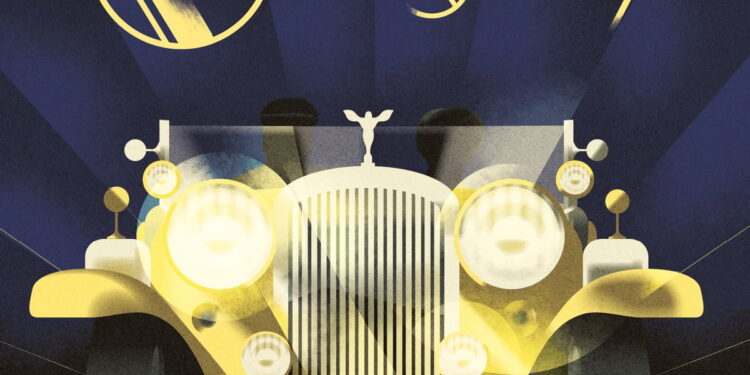
Table of Contents
Scott Fitzgerald’s novel, “The Great Gatsby,” is a classic work of American literature that explores the themes of wealth, love, and the American Dream. One of the notable aspects of the novel is Fitzgerald’s masterful use of symbolism, which adds depth and complexity to the narrative. This essay will analyze the prominent symbols in “The Great Gatsby” and examine their significance in conveying the novel’s themes and characters.
1. The Green Light: The green light, situated at the end of Daisy Buchanan’s dock, is one of the most iconic symbols in the novel. It represents Gatsby’s aspirations and longing for a better future, specifically his desire to be reunited with Daisy. The green light also symbolizes the American Dream and the elusive nature of success. It embodies both hope and unattainability, as Gatsby’s pursuit of the green light ultimately leads to his downfall.
Also Read:-
- Discuss the theme of class struggle in Charles Dickens’ A Tale of Two Cities
- Analyze the use of symbolism in Ernest Hemingway’s The Old Man and the Sea
- Analyze the use of metaphor in T.S. Eliot’s “The Love Song of J. Alfred Prufrock
- Analyze the use of symbolism in Franz Kafka’s The Trial
2. The Valley of Ashes: The Valley of Ashes, a desolate industrial wasteland between West Egg and New York City, symbolizes the moral and social decay that exists beneath the glamorous surface of the wealthy. It represents the consequences of the pursuit of material wealth and the stark contrast between the rich and the poor. The Valley of Ashes serves as a reminder of the hollowness of the American Dream and the emptiness of the lives of the characters.
Symbolism in F. Scott Fitzgerald’s The Great Gatsby- The Eyes of Dr. T.J. Eckleburg: The eyes of Dr. T.J. Eckleburg, painted on a billboard in the Valley of Ashes, symbolize the loss of moral values and the all-seeing, judgmental presence of God. The eyes are frequently mentioned in the novel, representing the characters’ guilt, the corruption of the American Dream, and the idea that one’s actions are always being observed and judged.
3. The Mansion and the Parties: Gatsby’s lavish mansion and extravagant parties symbolize the excesses and superficiality of the Jazz Age. The mansion represents Gatsby’s material wealth and his desire to impress others. However, it also serves as a facade, concealing Gatsby’s true self and his longing for acceptance and love. The parties, filled with hedonism and superficiality, symbolize the emptiness and moral decay of the upper class.
4. The Color Symbolism: Colors are used symbolically throughout the novel. The color white represents innocence, purity, and the unattainable ideal. Daisy, often associated with the color white, embodies this symbol, as she is seen as ethereal and unattainable to Gatsby. On the other hand, the color yellow symbolizes corruption, deceit, and the decay of the American Dream. The yellow symbolism is evident in the characters of Tom Buchanan and his mistress, Myrtle Wilson.
5. The Weather: The weather in “The Great Gatsby” is employed symbolically to reflect the characters’ emotions and the narrative’s tone. For example, the scorching heat of the summer represents the intense passions and tensions among the characters. The rain, particularly during Gatsby’s climactic confrontation with Tom, represents emotional turmoil and the cleansing or purging of the characters’ sins.
The Great Gatsby “Themes”
Symbolism in F. Scott Fitzgerald’s The Great Gatsby- Scott Fitzgerald’s novel, “The Great Gatsby,” is a classic work of American literature that delves into various themes that continue to resonate with readers. Set in the 1920s, the novel offers a glimpse into the Jazz Age and explores themes such as the elusive nature of the American Dream, the corrupting influence of wealth, the illusion of social class, the power of love and obsession, and the inevitability of time and its impact on human lives. This essay will analyze these themes and their significance in understanding the characters and the world portrayed in “The Great Gatsby.”
1. The Elusive American Dream: One of the central themes in “The Great Gatsby” is the elusive nature of the American Dream. The characters, especially Jay Gatsby, strive to achieve their vision of success, wealth, and happiness. However, Fitzgerald portrays the Dream as ultimately unattainable, highlighting the disillusionment and emptiness that accompanies the pursuit of material wealth.
Symbolism in F. Scott Fitzgerald’s The Great Gatsby- The novel raises questions about the true nature of the American Dream and its inherent limitations.
2. The Corrupting Influence of Wealth: Fitzgerald explores the theme of the corrupting influence of wealth through the character of Tom Buchanan and the opulent lifestyle of the wealthy elite. Tom, born into privilege, represents the moral decay and arrogance that can accompany immense wealth. The characters’ pursuit of wealth and status often leads to moral compromises, superficiality, and a loss of genuine human connection.
3. Illusion versus Reality: “The Great Gatsby” delves into the contrast between illusion and reality. The characters construct elaborate facades, hiding their true selves behind carefully crafted personas. Gatsby himself is the embodiment of this theme, creating a grandiose identity to win back Daisy’s love. The novel questions the consequences of living in a world of illusions, where appearances and superficiality mask deeper truths.
4. Social Class and the Illusion of Mobility: Fitzgerald examines the theme of social class and the illusion of social mobility. The stark divide between the “old money” and the “new money” becomes a lens through which the characters’ lives are examined. Gatsby’s attempts to infiltrate the upper class reveal the limitations and prejudices that exist within society, highlighting the notion that social mobility and acceptance are often unattainable for those not born into privilege.
5. Love and Obsession: Love and obsession are central themes in “The Great Gatsby.” Gatsby’s infatuation with Daisy fuels his relentless pursuit of wealth and success. The novel explores the destructive power of obsession, as characters become entangled in unhealthy relationships and become blind to the realities around them. Love, in this context, becomes an elusive and unattainable ideal, leading to heartbreak and tragedy.
6. Time and the Transience of Life: The theme of time and the transience of life permeate the novel. The characters’ constant preoccupation with the past and their attempts to recreate or recapture it illustrate the fleeting nature of time. The novel suggests that the past cannot be relived and that attempting to do so is ultimately futile. The passage of time also serves as a reminder of the impermanence of life and the inevitability of mortality.
Scott Fitzgerald’s “The Great Gatsby” is a rich tapestry of symbolism that enhances the novel’s themes and characters. The various symbols employed by Fitzgerald serve to deepen the readers’ understanding of the story and evoke emotions and ideas beyond the surface level. The green light symbolizes Gatsby’s hopes and dreams, the Valley of Ashes represents the moral decay of society, and the eyes of Dr. T.J. Eckleburg embody the loss of moral values. The mansion and parties exemplify the excesses and superficiality of the Jazz Age, while color symbolism and the weather further enhance the narrative’s themes and atmosphere.
Symbolism in F. Scott Fitzgerald’s The Great Gatsby- Through these symbols, Fitzgerald examines the destructive power of wealth, the illusion of the American Dream, and the emptiness and corruption that lurks beneath the glamour of the upper class. The symbols also reflect the characters’ desires, aspirations, and moral shortcomings. Gatsby’s yearning for the green light and Daisy, the characters’ interaction with the Valley of Ashes, and the allure of Gatsby’s mansion and parties all contribute to the novel’s exploration of the complex human experience.
Symbolism in F. Scott Fitzgerald’s The Great Gatsby- By employing symbolism throughout the novel, Fitzgerald invites readers to delve deeper into the themes and moral dilemmas presented in “The Great Gatsby.” The symbols serve as a lens through which to view the characters’ motivations, their relationships, and the societal context in which they exist. They heighten the emotional impact of the story and leave a lasting impression on readers, prompting them to reflect on the illusions and realities of the American Dream, the consequences of materialism, and the complexities of human nature.
“The Great Gatsby” stands as a testament to Fitzgerald’s skillful use of symbolism, illustrating how symbols can transcend their literal meanings and convey deeper layers of meaning and significance. It is through the exploration of these symbols that the novel continues to captivate and resonate with readers, shedding light on the timeless themes of love, longing, social class, and the human condition.
Q. What is the main plot of “The Great Gatsby”?
Ans. “The Great Gatsby” is set in the 1920s and follows the story of Jay Gatsby, a wealthy and mysterious man, as narrated by Nick Carraway, a young bond salesman. Gatsby is deeply in love with Daisy Buchanan, who is married to Tom Buchanan, a wealthy and arrogant man. The novel explores themes of love, wealth, social class, and the American Dream, as Gatsby seeks to win back Daisy’s love and navigate the glamorous but morally ambiguous world of the wealthy elite.
Q. What is the significance of the title “The Great Gatsby”?
Ans. The title “The Great Gatsby” reflects both the character of Jay Gatsby himself and the larger themes of the novel. Gatsby is referred to as “great” due to his larger-than-life persona, his immense wealth, and his aspirations. However, the title also suggests irony, as Gatsby’s greatness is ultimately undermined by the corrupting influence of wealth and his tragic pursuit of an unattainable dream.
Q. What is the American Dream in “The Great Gatsby”?
Ans. The American Dream in “The Great Gatsby” refers to the idea of achieving success, wealth, and happiness through hard work and determination. However, Fitzgerald presents a critical view of the Dream, highlighting its elusive nature and the moral compromises often required to attain it. The novel explores the hollowness and disillusionment that can accompany the pursuit of material wealth, questioning the true meaning of success and happiness.
Q. Who is Jay Gatsby?
Ans. Jay Gatsby, the novel’s protagonist, is a self-made millionaire with a mysterious past. He is known for his extravagant parties and his obsession with Daisy Buchanan. Gatsby represents the American Dream in its pursuit of wealth and social status. He is driven by his love for Daisy and the belief that he can recreate the past and win her back, but ultimately, his dreams unravel in tragedy.
Related Posts
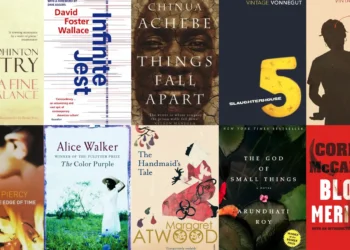
Top 10 English Novels of All Time Summary and Themes
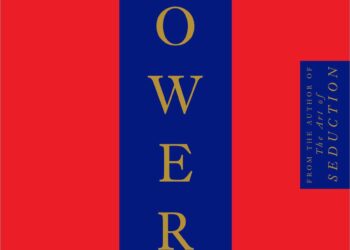
The 48 Laws of Power Summary Chapterwise by Robert Greene
What is precisionism in literature.

Attempt a critical appreciation of The Triumph of Life by P.B. Shelley.

Consider The Garden by Andrew Marvell as a didactic poem.

Why does Plato want the artists to be kept away from the ideal state

MEG 05 LITERARY CRITICISM & THEORY Solved Assignment 2023-24

William Shakespeare Biography and Works

Discuss the theme of freedom in Frederick Douglass’ Narrative of the Life of Frederick Douglass

How does William Shakespeare use the concept of power in Richard III

Analyze the use of imagery in William Shakespeare’s sonnets
Who wrote “the boy behind the curtain”, what is the significance of the title “the slap”, which australian author wrote “big little lies”, what is the premise of “the secret garden” by frances hodgson burnett.
- Advertisement
- Privacy & Policy
- Other Links
© 2023 Literopedia
Welcome Back!
Login to your account below
Remember Me
Retrieve your password
Please enter your username or email address to reset your password.
Are you sure want to unlock this post?
Are you sure want to cancel subscription.
- Entertainment
- Environment
- Information Science and Technology
- Social Issues
Home Essay Samples Literature The Great Gatsby Symbolism
The Use of Color Symbolism in "The Great Gatsby"
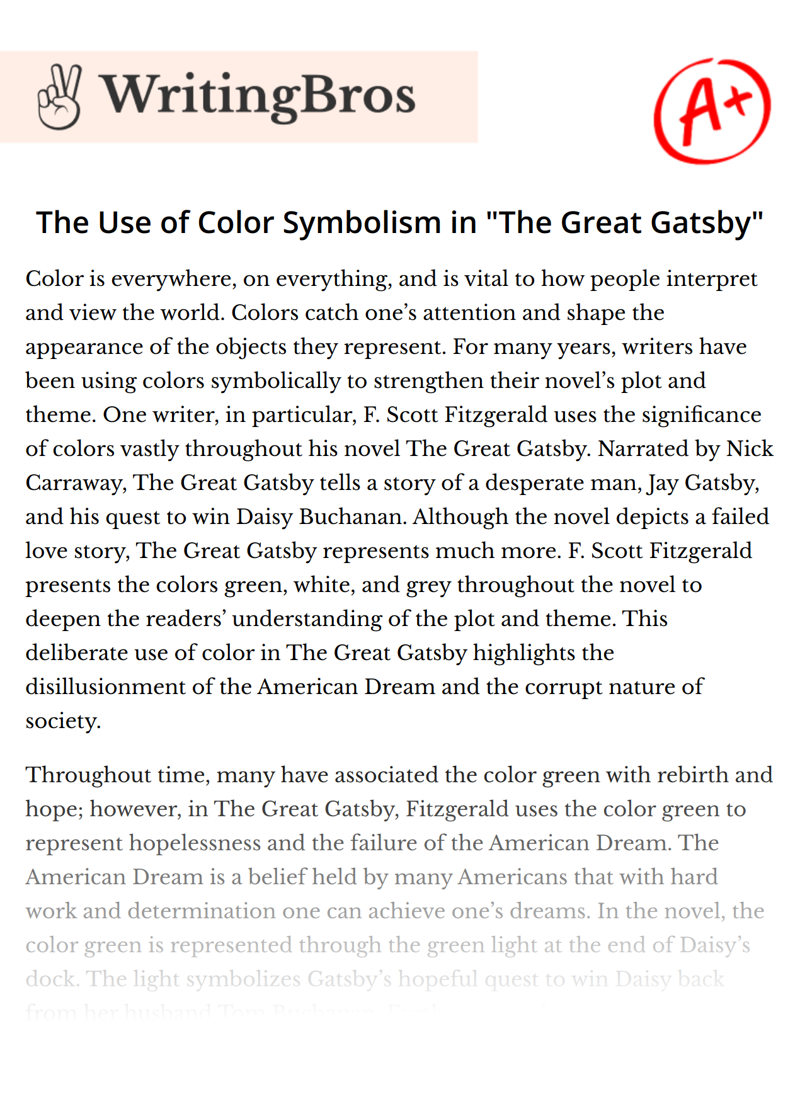
*minimum deadline
Cite this Essay
To export a reference to this article please select a referencing style below

- The Chrysalids
- The Snows of Kilimanjaro
- Still I Rise
- A Passage to India
- One Hundred Years of Solitude
- A Very Old Man With Enormous Wings
Related Essays
Need writing help?
You can always rely on us no matter what type of paper you need
*No hidden charges
100% Unique Essays
Absolutely Confidential
Money Back Guarantee
By clicking “Send Essay”, you agree to our Terms of service and Privacy statement. We will occasionally send you account related emails
You can also get a UNIQUE essay on this or any other topic
Thank you! We’ll contact you as soon as possible.
Home / Essay Samples / Literature / The Great Gatsby / The Great Gatsby: Decoding Symbolism in Fitzgerald’s Classic
The Great Gatsby: Decoding Symbolism in Fitzgerald's Classic
- Category: Literature
- Topic: Scott Fitzgerald , The Great Gatsby , The Great Gatsby Symbolism
Pages: 3 (1306 words)
- Downloads: -->
--> ⚠️ Remember: This essay was written and uploaded by an--> click here.
Found a great essay sample but want a unique one?
are ready to help you with your essay
You won’t be charged yet!
A Rose For Emily Essays
Animal Farm Essays
Fahrenheit 451 Essays
The Yellow Wallpaper Essays
Frankenstein Essays
Related Essays
We are glad that you like it, but you cannot copy from our website. Just insert your email and this sample will be sent to you.
By clicking “Send”, you agree to our Terms of service and Privacy statement . We will occasionally send you account related emails.
Your essay sample has been sent.
In fact, there is a way to get an original essay! Turn to our writers and order a plagiarism-free paper.
samplius.com uses cookies to offer you the best service possible.By continuing we’ll assume you board with our cookie policy .--> -->